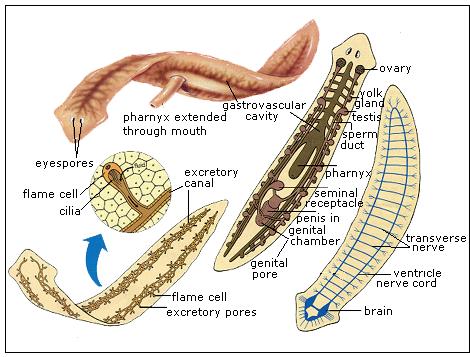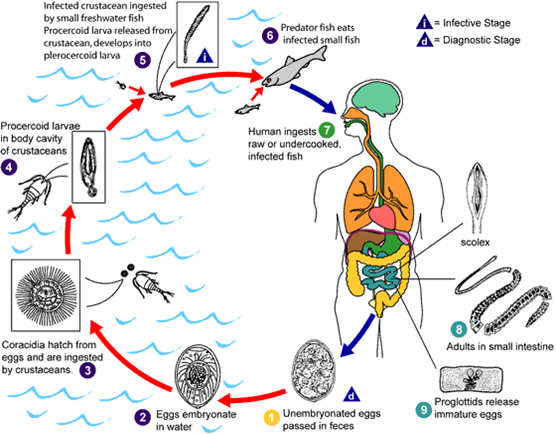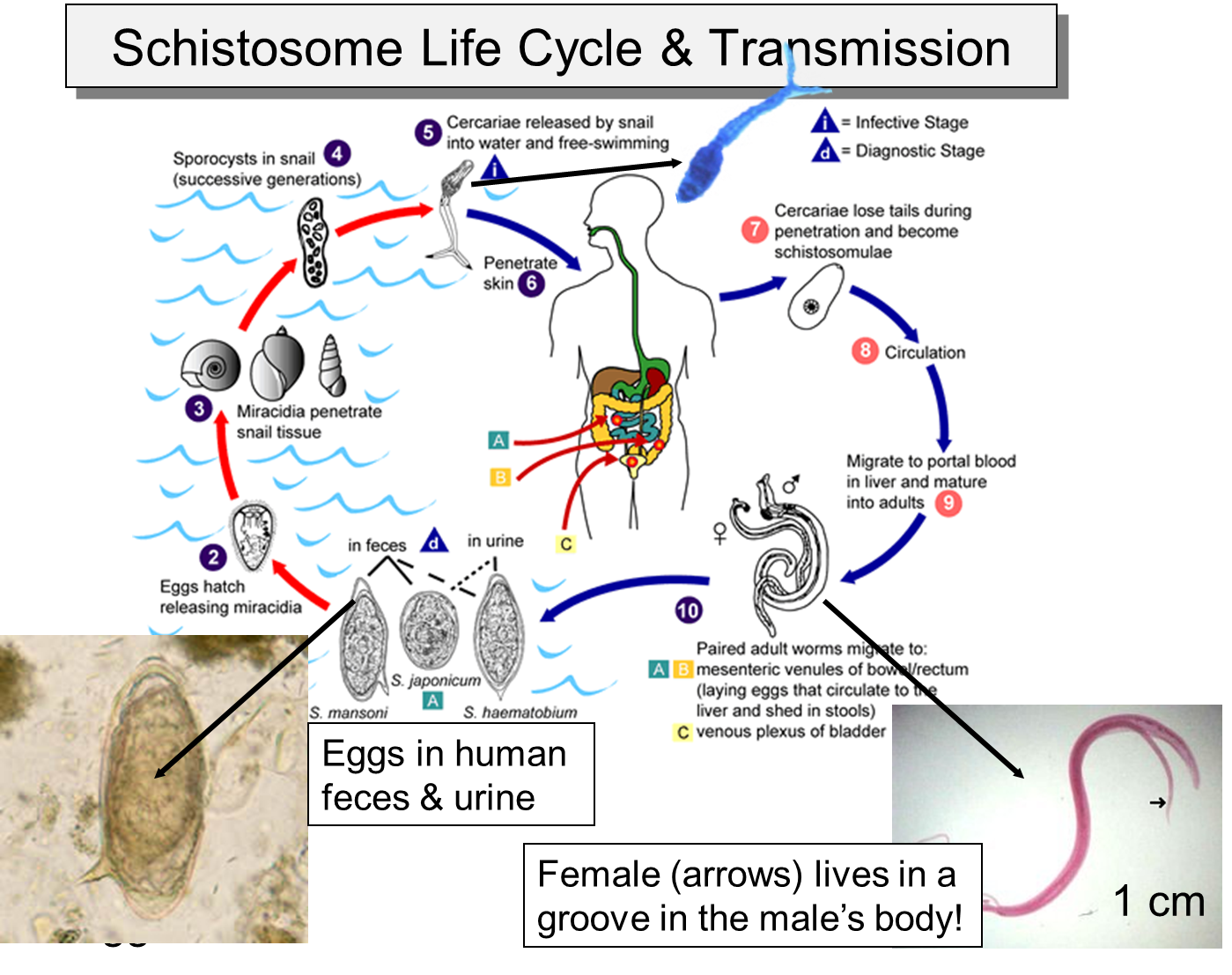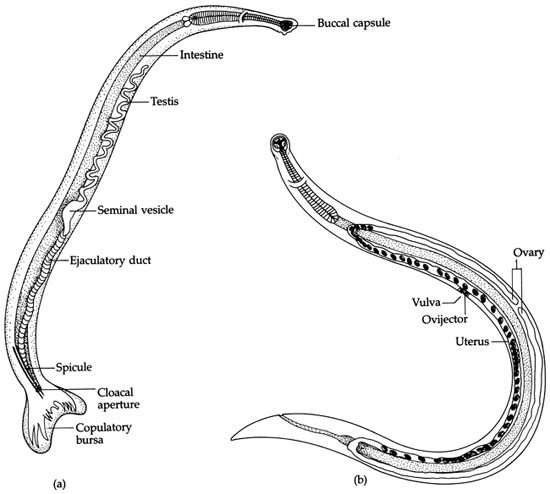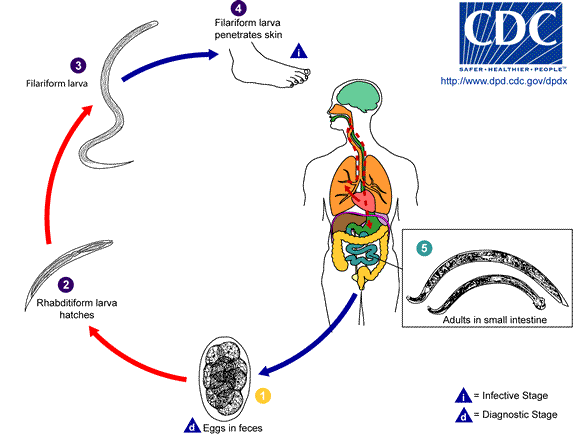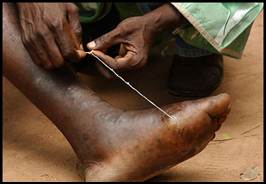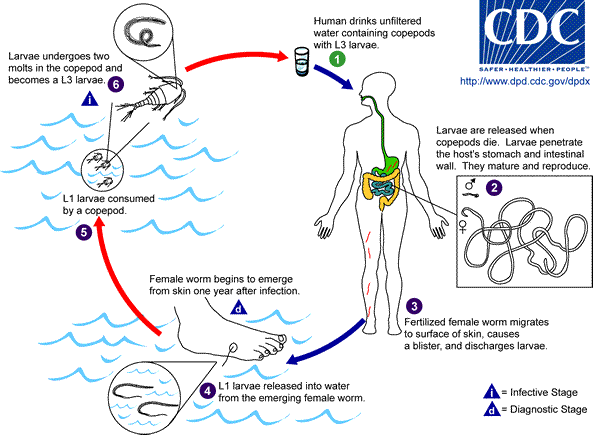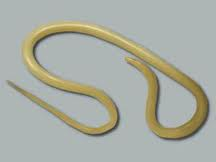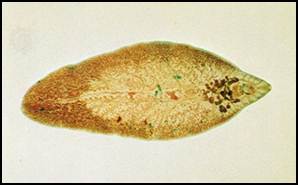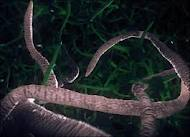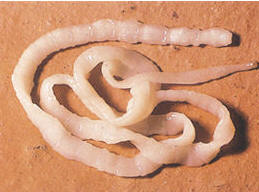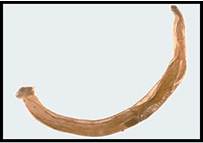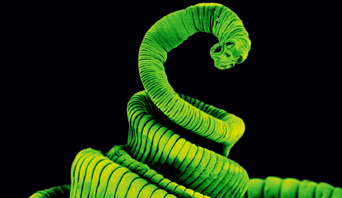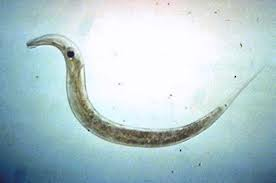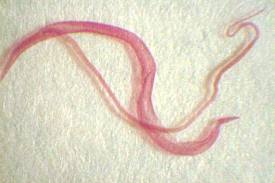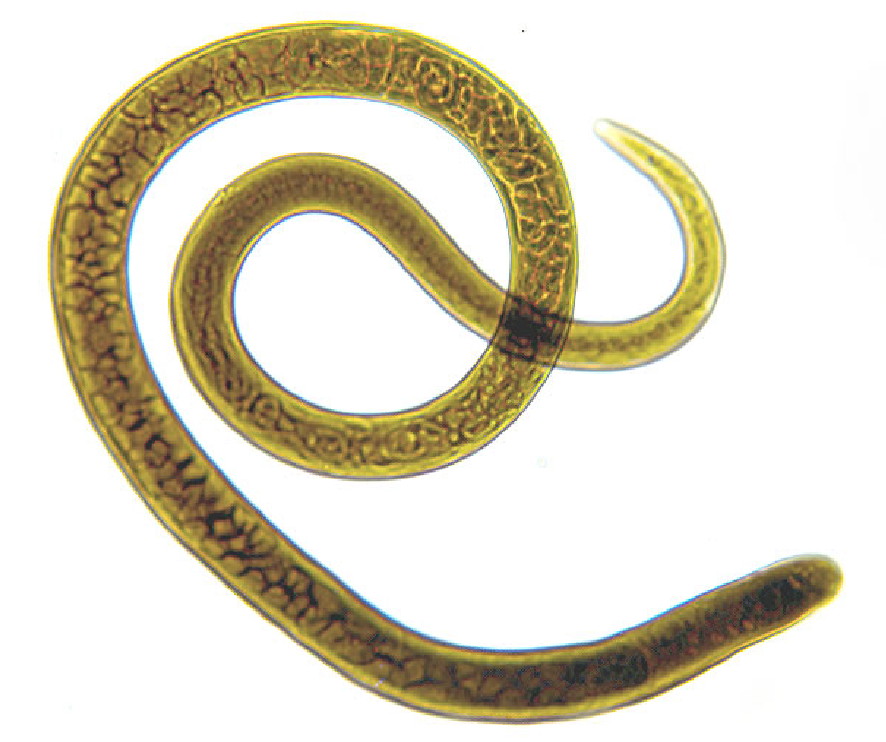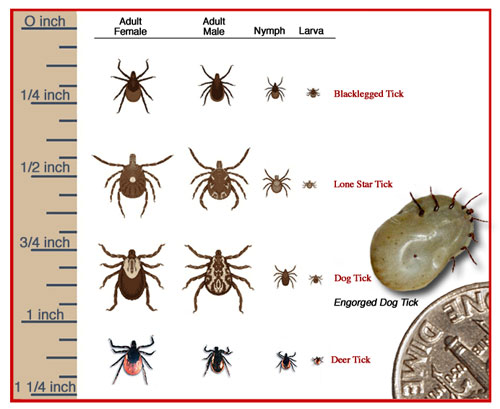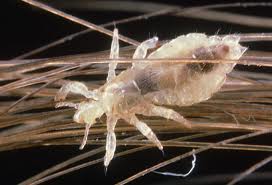Animal-related Infection
Helminths
From the CDC web site:
"Helminths are large, multicellular organisms that are generally visible to the naked eye in their adult stages. Like protozoa, helminths can be either free-living or parasitic in nature. In their adult form, helminths cannot multiply in humans. There are three main groups of helminths (derived from the Greek word for worms) that are human parasites:
- Flatworms (platyhelminths) – these include the trematodes (flukes) and cestodes (tapeworms).
- Thorny-headed worms (acanthocephalins) – the adult forms of these worms reside in the gastrointestinal tract. The acanthocephala are thought to be intermediate between the cestodes and nematodes.
- Roundworms (nematodes) – the adult forms of these worms can reside in the gastrointestinal tract, blood, lymphatic system or subcutaneous tissues. Alternatively, the immature (larval) states can cause disease through their infection of various body tissues. Some consider the helminths to also include the segmented worms (annelids)—the only ones important medically are the leeches. Of note, these organisms are not typically considered parasites."
These organisms have fairly complex anatomy and they tend to have complex reproductive cycles as well. Note, however, that in order for humans to become infected with the fish tapeworm, the feces of infected human needs to find its way into water, and humans have to eat raw fish from contaminated waters.
|
Examples of Flatworm Anatomy and Life Cycle |
|
|---|---|
|
Liver fluke anatomy (a flatworm) |
Life Cycle of the Fish Tapeworm |
|
|
|
The next table (below) illustrates the anatomy and life cycle of a hookworm, a roundworm.
|
Hookworm (a round worm) Anatomy and Life Cycle |
|
|
Adult Male (left) and Female (right) Hookworms |
|
|
See life cycle to the right. |
|
Eradication of Guinea Worm
See the links below to learn more about the campaign to eradicate Guinea worm. The first is a link to a short article in The Washington Post: "Guinea Worm is poised to become the second human disease to be eradicated" - published August 27, 2012. The next two links describe simple water filtration devices that have played a major role in the eradication campaign.

Study the life cycle of the guinea worm in the table above; under what circumstances is it potentially possible to eradicate an infectious disease of humans?
Rogues Gallery of Other Worms that Infect Humans
The table below provides a 'rogues gallery' of flatworms and roundworms that can infect humans.
|
Flatworms (Platyhelminths) |
Roundworms (Nematodes) |
|---|---|
|
|
|
Arthropods (Ectoparasites)
From the CDC web site:
"Although the term ectoparasites can broadly include blood-sucking arthropods such as mosquitoes (because they are dependent on a blood meal from a human host for their survival), this term is generally used more narrowly to refer to organisms such as ticks, fleas, lice, and mites that attach or burrow into the skin and remain there for relatively long periods of time (e.g., weeks to months). Arthropods are important in causing diseases in their own right, but are even more important as vectors, or transmitters, of many different pathogens that in turn cause tremendous morbidity and mortality from the diseases they cause."
This link is to an online learning module on Lyme disease.



